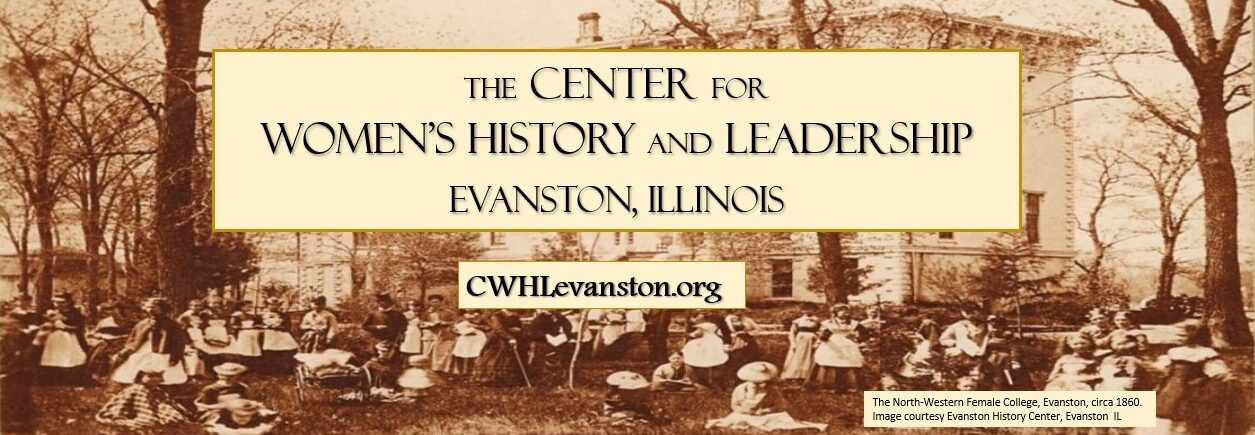In honor of International Museum Week 2022 we are highlighting the story of Anna Adams Gordon who was an influential figure in the WCTU’s history for more than 50 years. In addition to her work as Frances Willard’s personal secretary, she was the creator of the first museum at the house and brought the organization’s headquarters to Evanston. Much of Gordon’s work took place on the international stage – from her presidency of the World WCTU to her travels and visits with WCTU members in many other countries.
Early Life
Anna Adams Gordon was born in Boston, Massachusetts on July 21, 1853. She was a member of a large family who were very involved in their church, the Union Congregational Church in Boston. James and Mary Gordon, were both educated and raised both their daughters and sons to be educated, compassionate adults. As children, they were encouraged to participate in raising funds for parishioners’ missionary trips and other church endeavors. Gordon attended Mount Holyoke Seminary and LaSell Seminary, graduating from there in 1875.

This upbringing contributed to Anna’s desire to help others and was echoed in her later work with children’s temperance. Her first experience working with children in the temperance and peace movements was when she helped to set up a children’s group on a trip to visit her sister who was doing missionary work in Spain. Shortly thereafter in 1877, she found her lifelong calling when she met Frances Willard and began her 54-year long career in the WCTU. Her first role in the WCTU was as Willard’s personal assistant and traveling companion. But it quickly became clear that Gordon was capable of much more.
WCTU Work
Anna Gordon became the superintendent of juvenile work for the WCTU in 1891, and was very influential in the WCTU’s creation of the WCTU’s children’s group, the Loyal Temperance Legion (LTL), in 1895. By the time Gordon became the president of the National WCTU in 1914, the LTL had active chapters in every U.S. state as well as reportedly in 50 countries across the world.
After Willard’s death in 1898, Gordon took on the role of Vice President of the WCTU, focusing on stabilizing the organization under new leadership and memorializing Willard in books and through opening of the house museum and collecting archival materials from the Willard family. She also settled the WCTU into their new offices at the Willard house in Evanston, which was also her home.
After becoming NWCTU president in 1914, Gordon steered the organization through the war years as its international work grew and then through the fight for national prohibition in the U.S. She became President of the World WCTU in 1922. Following the ratification of the 18th Amendment in 1919 that established the prohibition of alcohol in the United States, Gordon guided the WCTU in increasing their attention towards other goals, most notably women’s rights and child protection.
International Travels

As president of the WCTU, Frances Willard had fostered strong international ties with temperance groups in Europe. Later, under Anna Gordon’s leadership, the WCTU’s international connections expanded and she spent prolonged periods of time promoting the values of the WCTU and LTL in other countries. Most notable was her 1921 trip to Central and South America, during which time she was not only president of the National (U.S.) WCTU, but also vice-president of the World WCTU.
Throughout her trip to Central and South America, Gordon observed and questioned leaders of temperance societies and organizations, including national and local WCTU chapters, about their different approaches to policies, values, morals, education, religious faith, and organization. She spent time learning and understanding the various methods of temperance practiced in each country and region to create stronger, lasting international bonds of communication and cooperation between different countries. Gordon gained perspective, and in turn was greatly respected, because she listened to the leaders and welcomed their ideas. She took what she learned back to the World WCTU, including how these countries would continue to face challenges such as gender, racial, religious, and political issues that were unique to their communities. She believed that these issues needed to be understood and addressed by the World WCTU as it tried to grow and adapt to the challenges faced in each country.
As World WCTU membership eclipsed one million members across 45 countries worldwide in 1919, Gordon stressed, more than ever, the importance of a worldwide league of women united in its quest for temperance and women’s rights. For her, the World WCTU was that organization.
A draft of this brief biography was written for a StoryMap of Anna Gordon’s trip to South America for the Spring 2021 Museums class in the Public History program at Loyola University Chicago. Thanks to Scarlett Andes, Jennifer Duvall, Ve’Amber Miller, Maris Rosenfeld, and Nick Spoerke. Our plan is to review and edit the StoryMap and make it available as well.
Primary Sources
9th Convention World’s WCTU Report. 10/23-28/1913, New York, NY. World’s WCTU Convention Reports 9-16, 1913-1937. WCTU Archives, Evanston, Illinois.
10th Convention World’s WCTU Report. 04/19-16/1923, London, England. World’s WCTU Convention Reports 9-16, 1913-1937. WCTU Archives, Evanston, Illinois.
11th Convention World’s WCTU Report. 11/11-16/1922, Philadelphia, PA. World’s WCTU Convention Reports 9-16, 1913-1937. WCTU Archives, Evanston, Illinois.
AAG – Bios, Obits, 1931, A. Gordon Box 1, WCTU Archives, Evanston, Illinois.
Secondary Sources
Beatty, Virginia L. Anna Adams Gordon: The Can-Do President. Signal Press, Evanston, IL, 2006.
Bordin, Ruth. Woman and Temperance: The quest for power and liberty, 1873 – 1900. Rutgers University Press, New Brunswick, 1990.
Tyler, Helen E. Where Prayer and Purpose Meet. Signal Press, Evanston, IL, 1949. Tyrell, Ian. Woman’s World, Woman’s Empire: The Woman’s Christian Temperance Union in International Perspective 1880-1930. Chapel Hill: University of North Carolina Press, 1991.
